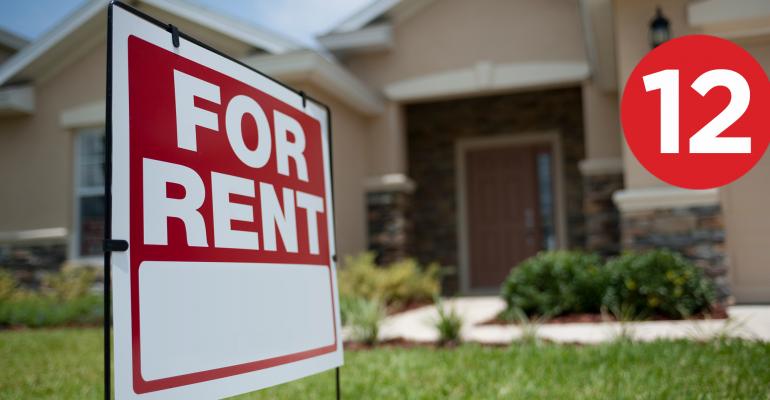- For Some, Built-to-Rent Communities Make Buying vs. Renting a No-Brainer “The Brands are typical of the thousands of people—from millennials to empty-nesters—who can afford to buy a house but opt to rent. These renters are seeking out built-to-rent communities, entire developments of new, single-family homes that developers intend to rent, not sell. These tenants, who may be put off by the high price of single-family homes today, or the bidding wars, are instead drawn to the luxury features and finishes, amenities and good school systems these rental communities offer.” (The Wall Street Journal)
- New Buildings Lure Tenants With Free Rent “Typically under pressure to lease up quickly in order to please lenders and project an air of success, developers of apartment buildings that have opened in recent months have also had to contend with higher inventory and weakened demand brought on by the pandemic. As a result, for much of 2020 and 2021, it’s been a market tilted toward renters at new projects across the city.” (The New York Times)
- Student Housing Outperforming Other Asset Classes Post-COVID “Dedicated off-campus student housing is exiting the pandemic as a potentially more profitable, long-term commercial real estate asset than malls, hotels and offices. Part of that is what the pandemic did to those other assets.” (Commercial Observer)
- Construction’s Labor Quandary Is An Old Problem With New Complications “But the common refrain coming from industry leaders about the dearth of skilled workers has taken on a different dimension during the coronavirus pandemic. Part of it, according to Project Management Advisors Vice President Mark Knott, a longtime construction manager who advises firms on construction and project management issues, is that everything is happening at once. Labor and materials issues are compounding problems; if there was just a shortage of, say, steel, timelines could be altered, and it would be possible to control schedules, within reason.” (Bisnow)
- Apple and Google want to force remote workers back into cubicles. That friction could lead to a job exodus “‘Business leaders are trying to go back into an incredibly costly, inanimate object that we just proved had little to no impact on productivity,’ he said, referring to offices. ‘This is a global permission slip to do something different’” (San Francisco Chronicle)
- IBM tells U.S. employees they will return to the office in September “In the memo, which was viewed by CNBC, LaMoreaux said that IBM is working on protocols for fully vaccinated employees to work in the office without masks. In addition, LaMoreaux said IBM is working on health and safety protocols for business travel and meetings with clients from outside the company.” (CNBC)
- Common takes over Starcity’s co-living portfolio “Common, among the fastest-growing co-living landlords, has reached an agreement with its former rival Starcity to take over management of the bulk of Starcity’s portfolio — about 7,500 units including both operating and pipeline units — around the globe, Common confirmed with The Real Deal. The acquisition came only several months after Starcity’s acquisition of Ollie, another co-living startup.” (The Real Deal)
- Why the Hybrid Workplace Is a Cybersecurity Nightmare “Making things even worse: Security teams have been stretched thin by the demands of the pandemic. For the past year, they’ve had to make sure everyone is equipped to work from everywhere and can use critical tools such as virtual meeting rooms. Things will only get tighter now that businesses are hiring more workers and launching into new projects they had put on hold during the pandemic.” (The Wall Street Journal)
- Best Buy joins Walmart and Target in closing stores on Thanksgiving, a blow to Black Friday “The electronics retailer confirmed to Insider Wednesday that all of its stores will be closed for the US national holiday for the second year running. Walmart and Target also announced this year that their stores would close for the holiday.” (Insider)
- New York’s Vaccine Passport Could Cost Taxpayers $17 Million “The state’s three-year contract with IBM — obtained by an advocacy group and shared with The New York Times — to develop and run the pass establishes the groundwork for a future where at least 10 million people in the state would have an Excelsior Pass. It would provide them with a QR code that would not only verify their vaccination status but could also include other personal details like proof of age, driver’s license and other health records.” (The New York Times)
- This new community will have 21,000 homes – and net zero carbon emissions, developer says “A new housing model is rising from the dirt in Valencia, California, and potentially raising the bar for real estate developers hoping to reduce their carbon footprints. More than 21,000 homes are going up in a brand-new community that, its developer says, will be the largest net-zero community in the nation, and potentially the world.” (CNBC)
- As home prices soar in unlikely places, the most vulnerable residents pay the price “Since the coronavirus pandemic began, low mortgage rates and high infection rates have fueled a housing boom that has become one of the most unequal features of the economic recovery. The repercussions are playing out nationwide, as home prices rise in 95 percent of the country, but the pain is sharpest in unexpected pockets such as Kingston, where the boom hit without warning.” (The Washington Post)
0 comments
Hide comments





